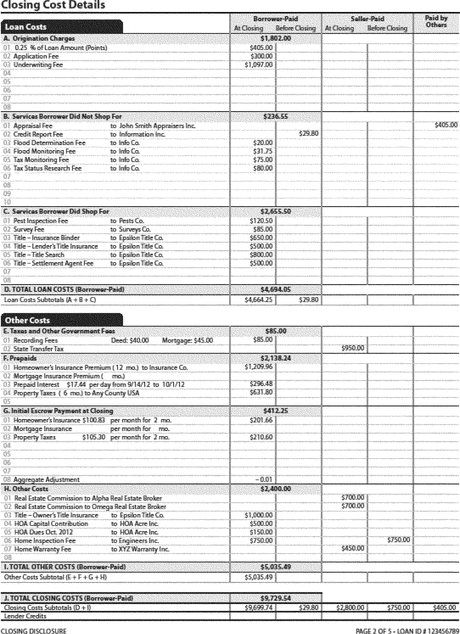Home Buyer s Guide Closing Of The Mortgage The HUD1 Settlement Statement Mortgage Note Escrow
Post on: 1 Июнь, 2015 No Comment

If the application is found acceptable, the firm commitment is issued to the borrower and the lender prepares for the closing of the mortgage — the final step before you can call the house your own. In fact, two separate closings occur at this time: the closing of your loan and the closing of the sale. At this stage you should take care of the following things:
Closing date. Once your application for a mortgage loan has been approved and you have received a commitment letter from the lender, you should settle with the seller and lender the actual date of closing. Make sure that settlement will take place before your rate lock agreement expires.
Closing costs. You’ll be required to pay your closing costs and down payment at the settlement. It’s important to know before closing date how much money you’ll need at closing.
Within three business days of receiving the loan application RESPA requires the lender to give you a Good Faith Estimate of closing costs, which lists the charges the buyer is likely to pay at settlement. This is only an estimate and the actual charges may differ. Go to our page Closing Costs to see a list of the costs and fees you can expect to pay at closing.
The HUD-1 Settlement Statement is a standard form that shows you the actual amount of money you’ll need to bring to closing. RESPA allows the borrower to request to see the HUD-1 Settlement Statement one day before the actual settlement.
Let the lender know that you will want to see the HUD-1 Settlement Statement before closing and question any amount that you do not understand. It is also advisable to review all the documents you will need to sign prior to the closing date.
Final inspection of the property. If repairs or maintenance on the property are a part of the purchase agreement you should make a final inspection of the property.
Depending on local custom, closing could be conducted by an escrow agent, attorney representing you or the lender, real estate agent, or title insurance company’s representative. Here is a list of the major documents you will have to sign at settlement:
The Deed is the document that transfers title to real property from one owner to another. The deed should contain an accurate description of the property being conveyed, should be signed according to the State laws where the property is located. The deed will be sent to you after the closing agent officially records the deed at your local government office.
The Mortgage is a lien on the real property that gives the lender the right to take the property by foreclosure if you default on the loan. It states your and lender legal rights and obligations including your responsibility to make your mortgage payments (principal and interest) and pay real estate taxes and insurance on time.
A Deed of Trust is used in place of a mortgage in some states. By signing a deed of trust, the borrower transfers the legal title for the property to the trustee until the loan balance is paid. If the borrower defaults in the payment of the debt, the trustee may sell the property without legal proceedings.
The Note is legal document that acknowledges a debt and promises to pay according to the agreed terms of the loan. It also recites the penalties and steps the lender can take if you fail to make your monthly mortgage payments.
The HUD-1 Settlement Statement must be signed by both you and the seller.
The Truth-in-Lending statement is required by the Truth-in-Lending act. It discloses the terms of the loan, including the interest rate, the loan amount, the annual percentage rate (APR) and the total payments required. If no changes in the loan terms have taken place since the loan application than this form isn’t required.
The Initial Escrow Statement itemizes the estimated taxes, insurance premiums and other charges anticipated to be paid from the escrow account during the first twelve months of the loan. It lists the escrow payment amount and any required cushion. An Annual Escrow Statement must be also delivered to borrower once a year.
The Mortgage Servicing Disclosure Statement discloses to the borrower whether the lender intends to service the loan or transfer it to another lender.
Make sure you know exactly when and where you should send your first and subsequent payments and what the penalties are for being late.
Related Articles:
Closing Costs A list of fees that you’ll have to make during the closing with brief explanations.
Consumer’s Guide To Mortgage Settlement Costs This brochure will give you detailed explanation of different closing costs, so you may find the entire settlement process far simpler than you might have imagined.
Closing Your Mortgage Loan (MBA) The brochure gives you a description of the loan closing procedure and standard documents are typically required for closing.
Managing Your Mortgage How to plan your finance to avoid foreclosure when the loan is finally closed and what to do when you default on your mortgage.














